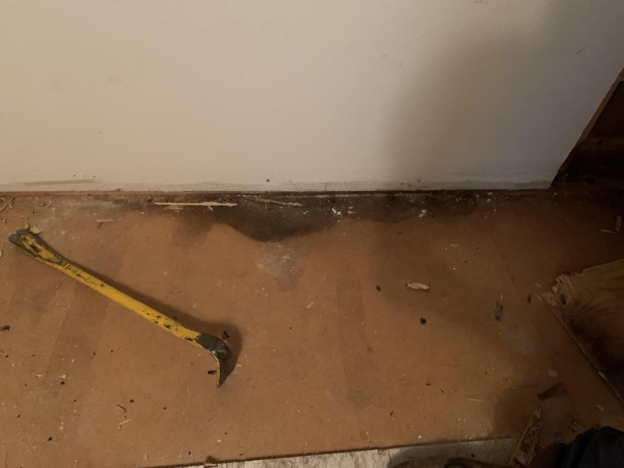
Clearwater faces the dual challenge of rapid urbanization and the associated stormwater management issues. As watertight surfaces multiply, stormwater runoff becomes a pressing concern, leading to flooding, erosion, and pollution of water bodies. In response to these challenges, Clearwater is turning to innovative solutions rooted in nature: green infrastructure.
Let’s discuss the significance of green infrastructure in addressing stormwater management issues in Clearwater, exploring its various applications and potential benefits for the community.
Understanding Stormwater Management
Stormwater runoff occurs when rainfall flows over surfaces such as roads, parking lots, and rooftops, carrying pollutants such as oil, debris, and chemicals into waterways. In Clearwater, the proliferation of waterproof surfaces intensifies this issue, overwhelming traditional stormwater systems and leading to environmental degradation. To combat these challenges, the city needs sustainable solutions that mimic natural processes and reduce the impact of runoff on water quality and aquatic ecosystems.
The Concept of Green Infrastructure
Green infrastructure represents a shift in how we approach stormwater management, emphasizing the integration of natural systems into built environments to address urban challenges sustainably. Unlike traditional "gray" infrastructure, which relies on concrete pipes and storage tanks to channel stormwater away from developed areas, green infrastructure leverages the capabilities of vegetation, soils, and natural processes.

At its core, green infrastructure seeks to mimic the natural water cycle by capturing, storing, and treating rainfall where it falls. This can involve a range of techniques, from simple rain barrels and green roofs to more complex systems like bioswales and constructed wetlands. This approach not only reduces the burden on centralized drainage systems but also provides a host of additional environmental, social, and economic benefits.
A key principle of green infrastructure is multifunctionality – the idea that these systems can serve multiple purposes beyond stormwater management alone. For example, a rain garden not only captures and filters stormwater but also provides habitat for pollinators, enhances biodiversity, and beautifies urban spaces. By maximizing the benefits of green infrastructure, cities like Clearwater can create more resilient, livable communities that are better equipped to withstand the challenges of climate change.
Green Infrastructure Solutions for Clearwater
1. Rain Gardens
Rain gardens are shallow depressions planted with native vegetation designed to capture and absorb stormwater runoff from impervious surfaces. In Clearwater, these gardens serve as natural filtration systems, trapping pollutants and allowing water to percolate slowly into the ground.
By incorporating rain gardens into urban landscapes, Clearwater can mitigate flooding, reduce erosion, and replenish groundwater supplies while beautifying public spaces and supporting local biodiversity.

2. Permeable Pavement
Permeable pavement, such as pervious concrete or permeable pavers, allows stormwater to infiltrate through the surface and into the underlying soil. In Clearwater, permeable pavement can be utilized in parking lots, sidewalks, and driveways to reduce runoff and mitigate the heat island effect.
By allowing rainwater to recharge groundwater supplies and reduce the burden on stormwater infrastructure, permeable pavement offers a sustainable alternative to traditional paving materials.
3. Bioswales
Bioswales are vegetated channels or swales designed to convey, treat, and manage stormwater runoff. In Clearwater, bioswales can be integrated into roadside ditches, medians, and urban parks to capture and filter pollutants before they enter water bodies.
By incorporating native vegetation with deep root systems, bioswales enhance infiltration, reduce erosion, and improve water quality while providing habitat for wildlife and enhancing the aesthetic appeal of urban landscapes.
4. Green Roofs
Green roofs, also known as vegetated roofs or eco-roofs, are rooftop gardens designed to absorb and detain stormwater while providing additional environmental benefits. In Clearwater, green roofs can be installed on buildings across the city, including commercial, residential, and municipal structures.
By retaining stormwater on-site, green roofs mitigate flooding, decrease peak flows to stormwater systems, and improve water quality by filtering pollutants.
5. Tree Planting and Preservation
Trees play a crucial role in stormwater management by intercepting rainfall, reducing runoff, and improving soil infiltration. In Clearwater, strategic tree planting and preservation efforts can help mitigate the impacts of urbanization on stormwater runoff and water quality.
By expanding the city's urban tree canopy through tree planting initiatives and preservation of existing trees, Clearwater can enhance its green infrastructure network and provide numerous environmental benefits.

Community Engagement and Education
Public involvement is crucial for the success of green infrastructure projects in Clearwater. Community engagement efforts should focus on raising awareness, fostering partnerships, and empowering residents to take action in their neighborhoods.
Educational initiatives, such as workshops, demonstrations, and outreach programs, can promote the benefits of green infrastructure and encourage behavior change toward sustainable water management practices. By engaging stakeholders across sectors, Clearwater can build a resilient and environmentally conscious community committed to preserving its natural resources for future generations.
Challenges and Future Directions
While green infrastructure offers promising solutions for stormwater management in Clearwater, several challenges must be addressed to facilitate widespread adoption. These include funding constraints, regulatory barriers, and technical limitations associated with implementing green infrastructure projects.
However, with continued investment, innovation, and collaboration, Clearwater can overcome these challenges and pave the way for a more sustainable future. By integrating green infrastructure into planning and development processes, Clearwater can enhance its resilience to climate change impacts, protect its water resources, and create healthier, more livable communities for all.
Facing stormwater challenges in Clearwater? Don't let urbanization put your property at risk. Whether it's emergency water damage cleanup, immediate flood restoration services, or 24/7 flood cleanup assistance in Clearwater, Flood Pros USA is your go-to expert. With our commitment to fast emergency flood recovery, we're ready to protect your community and property.
Visit us at Flood Pros USA or call now.
Subscribe to Flood Pros USA's Blog


Comments